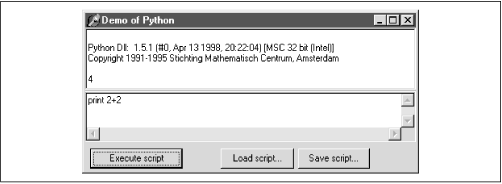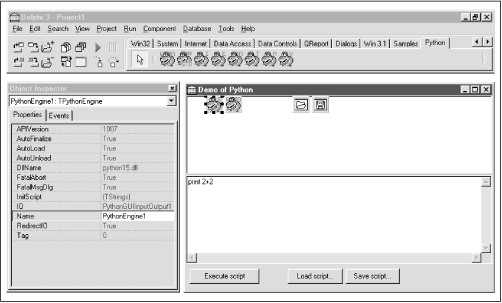Embedding Python in a Delphi Application
Figure 22.8 shows the first example from the PyDelphi tutorial.
 |
To
achieve this, you create a new project with the visual components
shown in Figure 22.8. In addition, place two special
Python-Delphi components on the form. These are invisible at runtime,
but allow you to set up many properties from the Object Inspector
rather than in code. The essential one is a
PythonEngine, (highlighted in Figure 22.9).
 |
The PythonEngine component has events that can be
trapped for initialization and finalization, and—most
usefully—an InitScript property of type
TStrings. This is a list of strings that can be
set at design time in an editor and can hold any Python code you
want.
In addition, you add a PythonGUIInputOutput
component. After setting a couple of properties, this redirects the
output of the Python engine to the upper Rich Edit window in the
form. The user can now type Python code into the lower window and
execute it with a click on a button.
In addition to the usual header, you need one line of code behind the button:
procedure TForm1.Button1Click(Sender: TObject); begin PythonEngine1.ExecStrings( Memo1.Lines ); end;
PyDelphi exposes almost the entire ...
Get Python Programming On Win32 now with the O’Reilly learning platform.
O’Reilly members experience books, live events, courses curated by job role, and more from O’Reilly and nearly 200 top publishers.

